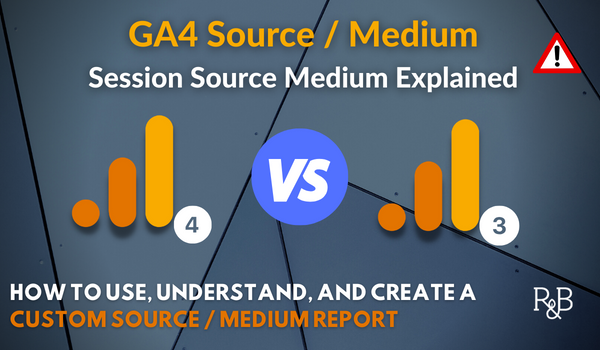Introducing the Impact of Second Dimension in Google Analytics on Information Analysis and Insights
In the world of information analytics, the usage of additional measurements within Google Analytics has actually emerged as an essential device for removing much deeper insights and unraveling complicated patterns that may otherwise stay covered. By peeling back the layers of primary data sets, secondary dimensions use a nuanced point of view that enhances the understanding of individual habits, site efficiency, and the effectiveness of marketing methods.
Exploring the Principle of Second Measurements
Second measurements in Google Analytics provide added insights by permitting customers to examine primary data in combination with a second characteristic. By incorporating second dimensions, individuals can dig much deeper right into the data and discover useful connections that could otherwise go unnoticed - what is a secondary dimension in google analytics.
By exploring the different additional dimensions readily available in Google Analytics, customers can open brand-new understandings and maximize their electronic marketing initiatives. In essence, additional measurements serve as an effective device for boosting information analysis and driving actionable outcomes.
Enhancing Data Analysis With Second Measurements
Having developed the foundational understanding of additional measurements in Google Analytics and their essential function in data evaluation, the emphasis now shifts in the direction of leveraging these additional credit to enhance the analysis of analytics data (what is a secondary dimension in google analytics). By incorporating second measurements into data evaluation, analysts can obtain deeper understandings right into user habits, web site efficiency, and advertising and marketing effectiveness

Furthermore, second measurements assist in contextualizing key information metrics by giving added layers of info. This contextualization help in comprehending the 'why' behind the information trends, helping experts make informed optimizations and choices to improve general efficiency. Inevitably, incorporating second dimensions enhances the information interpretation procedure, leading to even more significant understandings and critical actions.
Discovering Hidden Insights With Second Measurements
Exploring the midsts of analytics data with second dimensions reveals valuable insights that would certainly or else continue to be obscured. By including second dimensions in Google Analytics, organizations can uncover covert patterns, fads, and relationships that provide a more comprehensive understanding of individual behavior and website efficiency. These extra layers of information enable analysts to dive deeper into the key measurements, such as website traffic resources or touchdown pages, and get a much more nuanced point of read review view on just how various variables engage with each other.
Through making use of additional dimensions, experts can sector and contrast data across numerous measurements, enabling them to determine specific elements that influence customer interaction, conversion prices, and total success metrics. As an example, by matching the main measurement of 'tool category' with the secondary dimension of 'age,' online marketers can identify which age demographics favor accessing the website via mobile phones versus desktop computers. This degree of granularity empowers businesses to make data-driven choices and optimize their methods for better outcomes. you can try these out Eventually, uncovering surprise understandings via second measurements improves the deepness and precision of information evaluation, causing more informed decision-making and enhanced efficiency results.
Leveraging Additional Dimensions for Actionable Analytics
Structure upon the understandings introduced through second dimensions in Google Analytics, services can currently harness this enriched information landscape to drive workable analytics and strategic decision-making. By leveraging additional measurements, companies can delve much deeper into their information to draw out valuable patterns, fads, and connections that might have formerly gone unnoticed. This deeper degree of analysis makes it possible for organizations to get a more thorough understanding of user habits, campaign efficiency, and total site performance.
One trick benefit of utilizing additional measurements for actionable analytics is the capacity to section information based on particular standards. This division permits services to customize their campaigns and strategies to different audience teams, resulting in more targeted and reliable advertising efforts - what is a secondary dimension in google analytics. Furthermore, additional measurements supply a more all natural sight of customer communications, enabling businesses to optimize their website material, layout, and total customer experience
Optimizing Decision-Making With Secondary Dimensions
To improve strategic decision-making in analytics, leveraging additional measurements in Google Analytics can provide a much more nuanced perspective on user behavior and project efficiency. By integrating secondary dimensions into data analysis, services can delve deeper into the specifics of their website visitors' interactions and engagement patterns. This additional layer of info enables a more detailed understanding of how different variables, such as demographics, tools, or traffic sources, effect vital efficiency indicators.

Conclusion
In conclusion, using secondary measurements in Google Analytics plays a critical duty in boosting data Visit Website evaluation and uncovering concealed insights. By exploring this idea, one can gain a much deeper understanding of individual actions and make educated decisions based upon actionable analytics. Leveraging secondary measurements permits a more comprehensive interpretation of information and makes best use of the efficiency of decision-making processes.

Comments on “Comprehending Secondary Dimensions in Google Analytics: What is a Secondary Dimension and How It Improves Information Analysis”